Index
The first day of October (2017): Catalans attacked by the Spanish armed forces during the referendum day in 1‑10‑2017.
A Force More Powerful (1999): Gandhi and the Indian independence, Anti‑Apartheid Movement in South Africa, Civil Rights in the United States, resistance to Nazi occupation in Denmark, Solidarność in Poland, protest movement against Pinochet in Chile.
How to Start a Revolution (2011): exposition of the ideas of Gene Sharp, the main theorist of the non‑violent resistance.
Bringing Down a Dictator (2002): overthrow of Slobodan Milošević in Serbia.
Tahrir 2011 (2011): revolution in Cairo against Mubarak’s regime.
Maidan (2014): revolt in Maidan Nezalezhnosti (Independence Square), Kiev, Ukraine.
Everyday Rebellion (2013): Occupy Wall Street, Spain’s 15-M movement, Arab Spring, the democracy movement in Iran, FEMEN, opponents in Serbia and Turkey.
The People Speak (2009): popular movements in the United States.
5 documentaries about the civil disobedience in the United States.
Catalunya is nowadays harassed by a violent Spanish State that devotes all its official coercive mechanisms (police, military, judicial) and the non‑official ones (related media) to persecute the identity, liberty and dignity of the Catalan culture and politics. Similar harassment situations took place in different parts of the world and at different times in history. Over the 20th and 21st centuries, the most effective reaction has been the firm and well‑organized non‑violent resistance, that has managed to overcome in situations that seemed hopeless and insuperable. We analyze these questions in the following commentaries on some documentaries.
The First Day of October (2017), La Directa and Agència UO
On the 1st October 2017, the Catalans organized a referendum to decide either they wanted to form and independent republic or to be part of the kingdom of Spain. Spain had repeatedly denied the right of the Catalan people to decide on their own self‑determination and—given that the plebiscite was going to take place anyway despite all the threats launched by the government of Madrid—a force of 10,000 Civil Guards and armed Spanish National Police officers were sent to Catalonia with the ostensible mission to intimidate and repress.
The documentary describes the 1st October day, the determination of the citizens to exercise their right to vote, and the brutal attacks of the Spanish Armed Forces against the peaceable people. The shots are set in Barcelona, they show what happened in the different schools and centers where the voting points had been set up. They also show the people involved in the defense of the polling stations the night before and during the referendum day, as well as the international observers that came to Catalonia for the occasion. Both sides express their astonishment and indignation at the scenes of wanton violence perpetrated by the Spanish National Police officers against the citizens.
Nevertheless, it should be emphasized that—although it shows some of the many images of violence registered that day—what predominates in this documentary is not victimhood but quite the opposite, dignity and determination. The referendum was held despite the armed repression.
The vindictive reaction of the Spanish State against Catalonia took place immediately at the victory for democracy. Two months after the first day of October, the authoritarian automatism had created a total of 700 investigated mayors, half of the Catalan Government imprisoned and the other half in exile, two social activists also in jail and 200 websites closed. But, the collective determination to resist this unleashed authoritarianism is great. The 1st October changed the life and mindset of many Catalans.
The Spanish media are the least reliable in Europe, according to a study by Oxford University, and the version they gave of the facts is a deplorable and distorted bias—as reflected in the documentary with statements of the Spanish high-ranking politicians contradicted by the images of violence. Therefore, this film is a suitable contribution to the conservation and preservation of the truth, the journalistic ethics, and democracy.


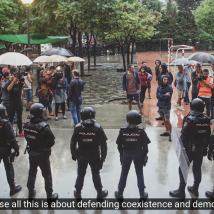

A Force More Powerful (1999), Steve York
A journey through the tradition of the Non-Violent Civil Resistance in the face of the armed oppression over the 20th century, a pacifist practice and philosophy that turned out to be surprisingly effective when it comes to situations in which the military superiority seemed unassailable. There are six key episodes analyzed.
a) Gandhi and the Indian Independence Movement
It’s a documentary about the creation of the ideology and strategy of the non‑violent resistance, a civic option that is not passive in any way but it’s full of committed activism. It highlights Gandhi’s psychological acuity, his ability to understand the mindset of the oppressor and to perceive how can he be defeated, as well as his intelligence to make use of the media of the moment that allowed him to show to the world the terrible violence of the British government. Thanks to Gandhi, the non‑cooperation and the non-violent resistance achieved a huge impact, they became a large‑scale civil disobedience movement. The struggle to expel the English from India, which started with the Salt March, went through great difficulties—as the deluge of imprisonments (up to 17,000 people from civil resistance)—but it managed to make the Indians discover their own strength, it delegitimized the British colonialism, it propelled the national independence, and it provided an example of how to deal with the state and colonial armed violence.

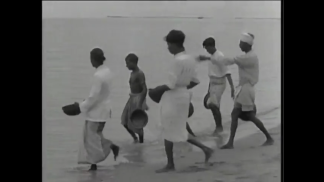
b) The Civil Rights Movement in the United States
The University of Nashville (Nashville, capital of Tennessee; Southern United States), was home to one of the decisive moments of the struggle to end up with the racial segregation in the United States. Based on Gandhi’s lesson, white and black university students launch a campaign to desegregate this city through non-violent ways. They started to visit restaurants and establishments where black people were not allowed, so they were attacked and arrested for that. Despite the repression, they continued coming into the locals where they had been banned off, and they made visible citywide the violence of the racists and the forces of order. The subsequent outrage led the African-American community to a boycott against the local commercial establishments. After several violent incidents, the major of Nashville had to submit to start the desegregation—which ended up prevailing throughout the city 3 or 4 years later, depending on the areas.
The story highlights the strong consciousness of the participants, their will to act in a strategic and systematic way, not spontaneous or emotive, and their willingness to put up with the abuse. To have their ideas clearly defined allowed the activists to resist the desire to answer back to the hitting and the insults physically, and to remain instead at a superior moral level than the aggressors, knowing that their actions would have the whole world and history as a witness. Gandhi’s lesson had been beneficial. It had been understood that the non-violence is a philosophy of force, a force more powerful than the violence.


c) Anti-Apartheid Movement in South Africa
The South African Anti-Apartheid Movement had to face a systemic violence and segregation situation that seemed impossible to overcome. The riot had some false starts, disorganized and violent, that didn’t give any result and only led to a large number of deaths and imprisonments—the armed forces of the white minority managed to crush the spontaneous outbreaks with a brutality that reached its highest intensity in 1984. The dynamic of defeats and repression inverted when the nation got down to the non-violent action and applied an economic boycott against the white‑owned Port Elizabeth establishments, reinforced with strikes that undermined the State’s stability and opened the world’s eyes to the intolerable apartheid’s oppression. At the beginning, the repression was overwhelming—including curfews, hundreds of activists and leaders of the movement arrested (about 300 prisoners), and the imposition of a state of emergency. But the discomfort of the shopkeepers—who were the basis of the Government’s support—and the international sanctions pushed the white prime minister to call the first elections with black participants, in which Nelson Mandela was elected president.
The documentary makes stand out the reorientation of the anti-apartheid struggle, the transition from the violence to the strategic non-violence in which every participant finds its place and purpose. The resistance and peaceable disobedience ended up achieving their aims.


d) Resistance to Nazi Occupation in Denmark
In 1940, the Nazis militarily occupied Denmark—which had declared itself neutral when the war started. The invasion had two basic purposes: to obtain supplies from the farms and armament from the factories. Until 1943, there were some occasional outbreaks and sabotages that didn’t undermined the hegemony of the occupiers. Later on, the Danes either took the risk of making general strikes, or to maintain a production rate so outrageously low that it hardly provided any benefits to the Germans. When the Germans intensified the repression, and applied the race laws to send local Jews to concentration camps, the Danes organized an escape from the country to their neighbor Sweden, across the sea. This kind of subterranean resistance led to the application of the Gandhi’s principles of non‑cooperation and peaceable disobedience, and to put up with the repressive measures—curfews, and the cut of gas, water and power supplies—until the Nazi soldiers had to abandon the country to fight in the European fronts where the Reich was already clearly losing the war.
The Danes added to the general principles of the non‑violent resistance some humorous elements, or at least that’s what it seems like nowadays—the drastically low productivity in the factories, the fact that many workers claimed that they had to leave their work place in the middle of their working day to take care of their orchards and gardens, because the curfew didn’t let them do it later in the evening…

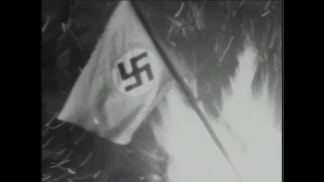
e) The Solidarity Polish Movement
The Soviet oppression in Poland since the 70’s had been very intense—deaths, injured people, prisoners—and it seemed like the country was totally controlled by the Stalinists. However, in August 1980, a strike in the Lenin shipyard in the city of Gdańsk broke out. Initially it was in protest of the rise of food price, but it immediately made its first claim the legalization of free trade unions, independent of the Communist Party that dominated Poland, as well as the right to strike. The strikers occupied the shipyard instead of marching through the city streets—where they knew that they will be attacked by the soldiers.
Gdańsk’s example spread over other Polish cities, and soon there were 22 factories and thousands of workers striking. They created an Inter‑Enterprise Strike Committee, and to negotiate with the representatives of the Communist Party they imposed as a condition that their conversations must be broadcasted on TV. The coordination between the different factories and the charisma of the national leader Lech Walesa and other leaders favored the determination of the workers in those negotiations. It also favored the creation of a general syndicate and a movement, Solidarity, that in 1989 ended up winning free elections—the first ones in Poland in over 60 years—against the Stalinist authoritarianism after going through a period in clandestinity, due to the imposition of martial law.
In the case of Poland, the strong nationalist sentiment was a specific element in the non-violent struggle application.


f) The Democratic Movement in Chile to Defeat Pinochet
In the 11th September 1973, Salvador Allende—the first Marxist president elected in free elections—was overthrown in an army coup leaded by the General Augusto Pinochet. Pinochet, in order to stay in power, imposed a brutal repressive regime in a decade in which 40,000 imprisonments and thousands of murders, ‘disappearances’, and tortures took place. The politics of his dictatorship consisted of imposing terror in every life in Chile to prevent the dissent.
In 1983, a cacerolada (pot-banging protest) was organized all over the country in protest against the dictatorship, and it paralyzed the capital city, Santiago. Since then, there was a national protest day every month, which implied a very low productivity in the work places and caceroladas from 8 pm. The disobedience was mostly peaceful, but the army took advantage of the few violent episodes to perpetrate the repression—only in Santiago there were more than 80 dead civilians. Chile was for a while on the verge of a civil war as the ones in Central America.
In 1988, Pinochet thought he was strong enough to win a referendum on his own regime, and he called it. The opposition launched an intelligent TV campaign to denounce the regime murders practiced throughout all these years, and despite the continuous threats, the nation voted for the end of the regime. It was followed by a transition towards democracy and the assertion of the human rights.


How to Start a Revolution (2011), Ruaridh Arrow
A documentary about the ideas of Gene Sharp, the main modern theorist of the non-violent revolution. It focuses in particular in the 198 principles exposed in his key work, From Dictatorship to Democracy (1993), translated into more than 30 different languages—which was a reference text in many different democratic revolutions such as those in Serbia, Ukraine, Guatemala, Indonesia, Egypt and Syria. It also inspired citizen movements such as Occupy Wall Street and the 15-M.
Sharp’s ideas have been so influential that many people know them without being aware of who came up with them. Their greatest strength is the way their combine with each other to create an ideology and a guide to a very direct action. Some of those principles are: to plan a strategy, to get over ‘atomization’, to resist violence, to show symbolic and recognizable flags and colors, to organize consumer boycotts, to refuse to pay debts or interests…
The film combines images from the files of revolutions from all over the world with Sharp’s interviews—a modest professor who has always refused to be on the center stage, despite he has been nominated twice for the Nobel Peace Prize. One of the statements he makes on the documentary is that ‘When you choose to fight with violence, you choose to fight with your opponent’s best weapons, and it’s not a clever choice. The psychological weapons, social weapons, economic weapons and political weapons end up being more powerful against oppression, tyranny and violence’. Again, Gandhi’s lesson has found a fertile ground.




Bringing Down a Dictator (2002), Steve York
The authors of A Force More Powerful previously shot a documentary about the bloodthirsty Serbian leader Slobodan Milosevic, focusing fundamentally on the action of the student Otpor! (‘Resistance’) movement—one of the main anti-Milosevic opposition forces. The film follows the evolution of this group of young people, how it managed to become a visible and quotidian presence in the country, and how it dealt with threats and imprisonments in its effort to expel the criminality and corruption. They achieved to extend their non-violent civil disobedience practice and made possible the 2000 elections—in which, the ultranationalist Milosevic was surprisingly defeated. The Otpor! arms were: rock concerts, internet campaigns, and to accept reprisals. All of them non-violent ways that turned out to be extremely effective.
The last of the large list of obstacles they had to overturn to bring liberty and human rights to their nation was that Milosevic impugned the results of the voting. Otpor! reaction was to call a general strike that culminated in the occupation of the parliament in Belgrade. In a country full of weapons, it wasn’t the armed struggle what defeated the tyrant but the non-violent resistance movement inspired to a large extent by Gene Sharp’s ideas.
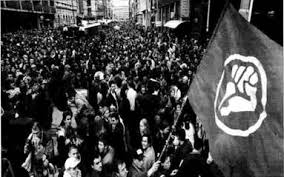

Tahir 2011 (2011), Tamer Ezzat, Ayten Amin and Amr Salama
A chronicle of the 2011 Egyptian revolution against Hosni Mubarak’s regime (leading since 1981). In the 25th January 2011, the first protest meeting took place in the Tahrir Square—the center of the capital city, Cairo, on the shores of the Nile river. Much courage was needed to go out and protest against the corruption and state violence, but even so a vanguard of revolutionaries dared to do it. For the next 18 days, there were more and more demonstrators arriving at the square and settling there.
The film is divided into three parts—‘The Good’, ‘The Bad’, and ‘The Politician’—, each of them devoted, respectively, to the demonstrators and their cohabitation in Tahrir; the police officers by which they were repressed; and Mubarak, who firstly emerged from the Nasser’s socialist pan‑Arabism, but who became a ridiculous dictator throughout his years in power.
The Square became a city inside a city, an autonomous society, which counted with either psychiatric services to treat anxiety and angst, or precarious surgical services. That was because the protest in Tahrir suffered a violent police siege that caused hundreds of deaths and injuries. The film doesn’t hide the harshness of that repression and the high price the revolutionaries had to pay for it, but it also states the need of a peaceful rebellion to start a new phase in the life of a damaged nation.
The first part points out the importance of the new technologies in the organization of the struggle—it talks about the ‘Generation Facebook’—and places the movement in the general context of the Arab Spring. It was a wave of revolutionary processes that, between 2010 and 2013, affected Tunisia, Libya, Syria, and Yemen, frequently with tragic results.


Maidan (2014), Sergei Losnitza
Another symbolic square, Maidan, and the main one of the capital city of Ukraine, Kiev, was home to a long protest against the despotic regime of Viktor Yanukovych, Vladimir Putin’s ally. The people that supported the idea to approach Europe and get free of the Russian domination, fought back Yanukovych’s politics between November 2013 and February 2014, by demonstrating in Maidan. The armed forces harshly repressed the demonstrations and caused death to dozens of civilians. In February, the president ended up leaving the country and received asylum in Russia—to which he had served more than to his own country.
Unlike the other films mentioned in this post—that belong to the genre of informative and narrative documentaries which consist on the combination of file materials and interviews—this one has cinematographic intentionality and aesthetic aims. It’s made with quite long and fixed shots, which include either idle times in which hardly anything happens, or in which all the action happens from beginning to end. There are no interviews, no narrator’s voice that explains the causes or the keys of the protest. The option is to show with a critical serenity, and with analytical distance, the evolution of the protest—how the participants organize themselves, the solidarity between them, the sing of hymns, the recitation of poems on a stage…—, and how it all mixed-up due to an ultimatum launched by the Government in January including the intervention of riot police, barricades, fire, stone throwing… There even were some snipers who killed civilians (there were nearly a hundred of deaths).
The formal awareness of the film does not implicate neutrality, of course. It’s an approach conceived to let the audience to form their own opinion about the facts. The director doesn’t hide his predilection for the protestants of Maidan, but he avoids making propaganda.
The events that followed the resignation and escape of Yanukovych have been dramatic for Ukraine—there took place constant attacks by the Russians, the occupation of Crimea, and Putin’s attacks in the Donbass region. Olena Pol, in the catalan online newspaper VilaWeb, makes a clear analysis of the situation: ‘The balance of Donbass, today, makes a total of a little less than 10,000 deaths and 23,000 injured people. […] Maidan was a wakeup call after many years of political apathy […]. Four years later, Ukraine is a country at war with a desecrated territorial integrity, victims, and everyday shootings, tangled in a web of lies and betrayal, broken in a million pieces, exhausted by the corruption and the misery […]. But it’s a country that now has a strong national identity, it’s a civic and active society, capable of transform itself and resist the attackers. People realized the power they had as a nation’.
Same as in the other non-violent resistance and disobedience processes shown in these documentaries, the assertion of the courage and dignity have a high price to pay—in the attacks, imprisonments, or even deaths—that can’t be eased or treated lightly.


Everyday Rebellion (2013), Arash T. Riahi and Arman T. Riahi
A film about current civil disobedience and non-violent resistance that shows a series of struggles waged nowadays, or that were raged until recently, all over the world. All of these different kinds of activism share the ideas exposed on the documentaries mentioned above. They’re ubiquitous and transversal—Occupy Wall Street, the Spanish 15-M movement, Arab Spring, FEMEN in Kiev, Paris and Stockholm share ideals and practices, they fight against the same enemy, who as Hydra has multiple heads. National rebellions against despotic leaders also have some similarities between them, no matter if they break out in Ukraine, Egypt, Serbia, Turkey, Syria, Iran or the United States.
The same ethical push of the defense of the individual and collective humanity encourages this activisms against the violence and repression threats its members have to face. This diversity of movements share their popular basis without any leaders and an endless creativity and inventiveness. Among the original methods that appear in this film, there’s a subversive use of helium balloons, ice cubes, and ping pong balls; jokes; graffities; naked women bodies; and fictitious courts.
Notwithstanding the predominant optimistic tone of the film, we should be aware that this kind of movements does not always end up victorious. Sometimes they had been crushed, other times they didn’t achieve their goals, and other times (as in the Arab Spring) they contributed to create situations as bad as those they were fighting against, or even worse. But not incurring in superficial and frivolous triumphalism does not mean to annul the support all those movements deserve. The academic investigation reveals that non-violent resistance movements in the 20th century were more effective than violent struggles. And the film inspires hope in the civil disobedience movements as a driving force for the necessary and urgent transformation in a world that many leaders want to completely destroy.


The People Speak (2009), Howard Zinn, Chris Moore, Anthony Arnove
An original public reading made by famous North American actors—Matt Damon, Viggo Mortensen…—of written fragments (such as letters, speeches, or books) by historical public figures fundamental in the fight for the civil rights in the United States. There also take part some frontline singers—Bob Dylan, Bruce Springsteen…—performing emblematic folk culture songs. See here. For the musical themes of the film, here.
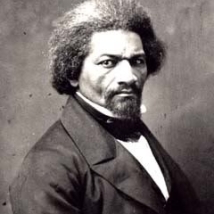


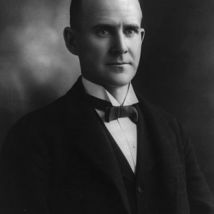

5 Films About Civil Disobedience in the United States
Despite the huge propaganda machine with which the country represents itself as a democratic champion, the United States has always been dominated by a political and business elite—that has oppressed and exploited the disadvantaged classes. This post goes over five films about non-violent struggles in the defense of civil, politic and human rights in America.




